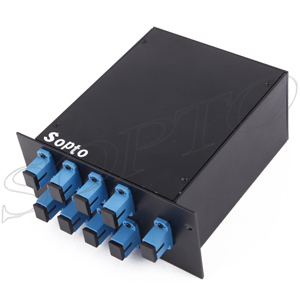- Fiber Optic Transceiver Module
- High Speed Cable
- Fiber Optical Cable
- Fiber Optical Patch Cords
- Splitter CWDM DWDM
- PON Solution
- FTTH Box ODF Closure
- PCI-E Network Card
- Network Cables
- Fiber Optical Adapter
- Fiber Optical Attenuator
- Fiber Media Converter
- PDH Multiplexers
- Protocol Converter
- Digital Video Multiplexer
- Fiber Optical Tools
- Compatible
- Can SFP+120KM be available? ...
- Why the price has so huge di...
- Can XFP transceiver modules ...
- Must optical fiber jumper be...
- Is there a module which can ...
- Can different brands SFP tra...
- How long will you change you...
- The difference between DDM S...
- Comparison of EPON and GPON
- Should we use 3rd party’s ...
- How to make differences betw...
- What is Drop Cable?
- Comparison of CWDM and DWDM ...
- GEPON Technology
- Differences of OM1, OM2, OM3...
- What is the armored fiber op...
- What is DAC cable?
- How to Choose A Right Fusion...
- Why Using a Compatible SFP O...
- Optical fiber transmission l...

Introduction of CWDM system principles
CWDM mux is a low-cost WDM transmission technology for metro access layer. In principle, CWDM mux is the use of different wavelengths of light multiplexer, optical signal multiplexing to a single optical fiber transmission link on the receiving end, with the optical demultiplexer mixed-signal in the fiber is broken down into different wavelengths signal connected to the receiving device.
The main difference lies in DWDM mux: relative to DWDM systems in terms of the wavelength interval in the 0.2nm to 1.2nm, CWDM mux has a wider wavelength interval, the industry accepted standard wavelength spacing of 20nm. CWDM wavelength interval width, the technical specifications of the laser requirements are lower. The wavelength interval to reach 20nm, so the maximum wavelength shift up to -6.5 ℃ ~ +6.5 ° C, the laser emission wavelength accuracy can be relaxed to ± 3nm, and the operating temperature range (-5 ° C ~ 70 ° C), temperature changes caused by wavelength drift is still within the available range, the laser without temperature control mechanism, so the structure of the laser is greatly simplified, and the yield increase.
Besides, the larger the wavelength interval means that the optical multiplexer / demultiplexer structure greatly simplified. Of CWDM systems, for example, the filter coating layers can be reduced to about 50 layers of 100GHz DWDM system filter coating layers of about 150 layers, which result in yield improvement, cost reduction, and supplier of filter greatly increase the pro-competitive. CWDM mux costs 50% less than the cost of DWDM mux and will further reduce the automated production technology and increasing volume.



